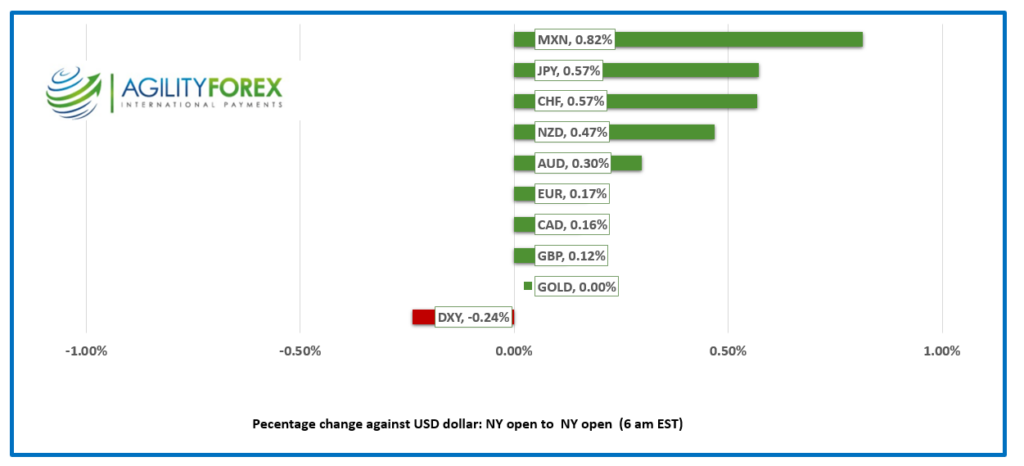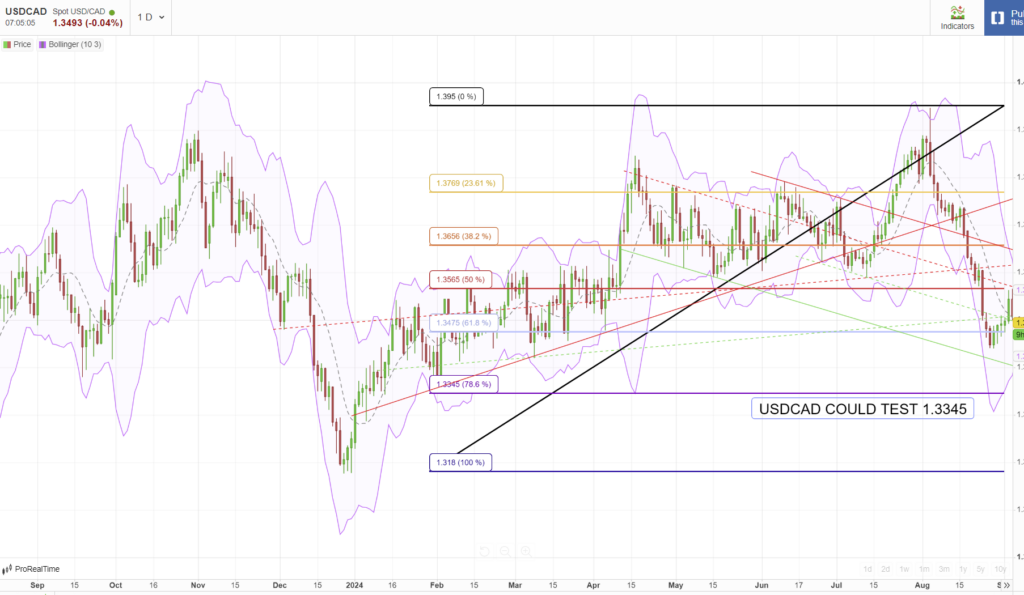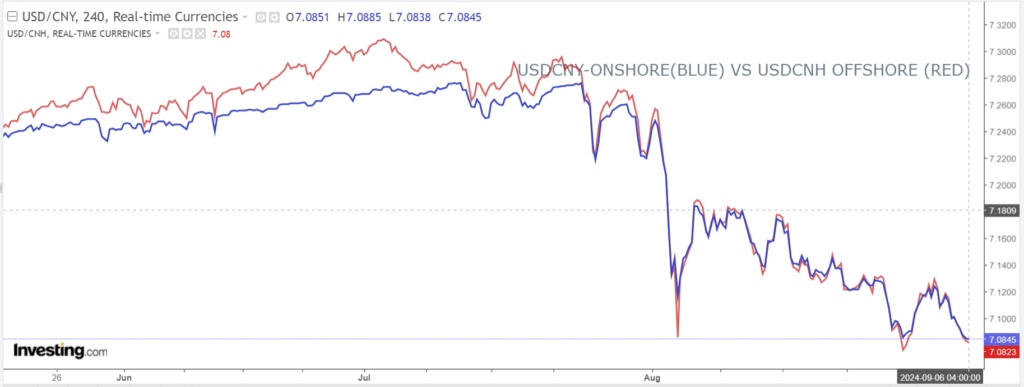
September 6, 2024
- NFP rises 142,000
- Canada gains 22,000 jobs but full-time employment falls by 44,000 jobs
- US dollar under pressure across the board, little reaction post NFP
FX at a Glance

Source: IFXA/RP
USDCAD open 1.3493, overnight range 1.3486-1.3520, previous close 1.3502
USDCAD climbed through the top of its overnight range after disappointing US and Canadian employment reports.
Canada gained 22,000 new jobs in August which was close to estimates and ended a string of two months of negative and below-consensus reports. The details are far-weaker than implied by the headline number as all the job gains were in part0time work and the unemployment rate jumped to 6.6% from 6.4%. The details are weak enough and ensure that the Bank of Canada will trim rates by another 25 bps (to 4.00%) in October.
USDCAD trading is going to be very choppy around the 10:00 am NY option expiry window as $1.4 billion of strikes in the 1.34775-80 and $1.1 billion of 1.3500 strikes expire.
The oil prices decline may have stalled WTI traded has climbed from a low of 68.92 to -69.91 in NY. With delayed support coming from the EIA reporting a 6.8 million barrel decline in US crude inventories, the third decline in as many weeks. The recent price drop has spooked OPEC, and the cartel announced they would extend existing output cutbacks for another two months, instead of ending them on October 1 as previously announced.
USDCAD technicals
The intraday USDCAD technicals are bearish below 1.3530 and looking to chop through support in the 1.3490-1.3500 area to extend losses to the 1.3440-60 support zone. A move above 1.3550 argues for more 1.3500-1.3600 range trading.
Longer term, Fibonacci retracement of the January-August range suggests that a decisive move below the 1.3470-75 area (Fibo 61.8% retracement) would extend losses to 1.3540 (78.6% Fibo retracement)
For today, USDCAD support is at 1.3470 and 1.3430. Resistance is at 1.3530 and 1.3550.
Today’s Range 1.3460-1.3550
Chart: USDCAD 4 hour

Source: Centralcharts.com
NFP Crap Shoot – “Rolling for the Big One”
Traders rolling the dice on a steep plunge in nonfarm payrolls, crapped out today. The US added 142,000 new jobs which was lower than the consensus but not earth-shattering. Apollo Global Management’s Chief Economist Torsten Slok suggested that today’s results did not support an aggressive (50 bp) Fed rate cut. He pointed to the rise in average hourly earnings (actual; 3.8% y/y vs 3.6% previously) as one metric that suggests that although the US economy maybe slowing it still points to a soft landing. However, futures rates disagreed and reacted to the downward revisions to June and July’s results and boosted the odds of a 50 bp rate cut from 41.9% pre-data to 59.0% in the aftermath.
EURUSD
EURUSD held steady, trading within a narrow 1.1107-1.1121 range then popped to 1.1156 post-NFP. The looming US employment report overshadowed yet another weak German Industrial Production reading (-2.4% m/m vs forecast -0.2%), as well as a smaller trade surplus.
GBPUSD
GBPUSD traded with a negative bias in a 1.3160-1.3194 range then jumped to 1.3238 after the odds for a Fed 50 bp rate increased to 59%. Traders ignored the 4.3% y/y rise in the Halifax House Price Index (forecast 4.2%). Traders are sitting tight, waiting for the US jobs report.
USDJPY
USDJPY dropped from 143.49 to 142.06 following mixed US employment and ISM services data. The soft results pulled the US 10-year Treasury yield down from 3.77% to 3.69%. Selling pressure intensified after former BoJ Governor Haruhiko Kuroda suggested that Japan’s nominal neutral rate could be below 2%, with short-term rates potentially around 1.5% or lower. This implies plenty of room for the BoJ to hike rates.
AUDUSD and NZDUSD
AUDUSD is stuck in a 0.6719-0.6744 range. RBA Governor Bullock’s comments earlier this week—pointing to inflation risks and the need for restrictive rates—are underpinning the currency. If the Fed opts for a 50 bp cut on September 18, AUDUSD could test 0.6850.
NZDUSD traded between 0.6209-0.6239, supported by broad-based US dollar weakness.
USDMXN
USDMXN eased from yesterday’s 20.1519 peak and traded sideways in a 19.7828-19.9580 range.
FX high, low, open (as of 6:00 am ET)

Source: Investing.com
China Snapshot
PBoC fix: 7.0925 vs exp. 7.0927 (prev. 7.0989)
Shanghai Shenzhen CSI 300 fell 0.81% to 3231.35
Former PBoC Governor Yi Gang said China needs to focus on ending deflation. The GDP price deflator has been negative for several quarters. He went on to day ““Overall we have the problem of weak domestic demand, especially on the consumption and investment side, so that needs proactive fiscal policy and accommodative monetary policy,”
Bloomberg reports that former US trade and treasury official Brad Setser says China is obscuring the true size of its trade surplus while unfairly subsidising exports. He claims China’s external surplus is closer to $700 billion, rather than the $253 billion reported.
Chart: USDCNY and USDCNH

Source: Investing.com





